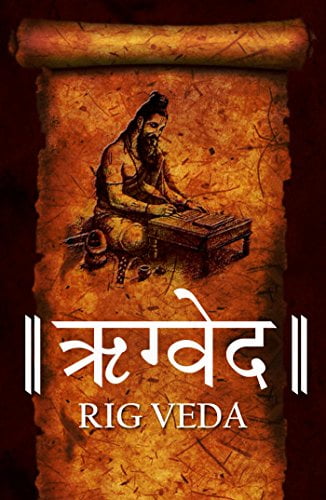Author : The authorship of most Vedas is uncertain and unknown.
Category:
The Rig Veda, one of the oldest and most significant texts in Indian literature and spirituality, was composed by various sages (rishis) over a considerable period. These sages were revered as both poets and seers, who received divine inspiration for their hymns. The hymns of the Rig Veda were orally transmitted through generations before being written down, and they reflect the collective wisdom and spiritual insights of numerous authors.
Major Authors of the Rig Veda
1. Vishvamitra:
- Notable Hymns: Vishvamitra is credited with composing many hymns in the third mandala of the Rig Veda. One of the most famous hymns attributed to him is the Gayatri Mantra (Rig Veda 3.62.10), a highly revered mantra in Hinduism.
- Background: Vishvamitra was a king who later became a sage. His story of transformation from a warrior to a revered sage is well-known in Indian mythology.
2. Vasishta:
- Notable Hymns: Vasishta’s hymns are primarily found in the seventh mandala of the Rig Veda. He is known for his deep spiritual insights and hymns dedicated to various deities, including Indra and Varuna.
- Background: Vasishta is one of the Saptarishis (seven great sages) and is considered a royal sage, often associated with the Solar dynasty. He was also the family priest of King Dasharatha, father of Lord Rama.
3. Gritsamada:
- Notable Hymns: Gritsamada is credited with composing hymns in the second mandala. His hymns often focus on Agni, the fire god, and other deities, reflecting profound spiritual and philosophical themes.
- Background: Gritsamada is known for his scholarly and spiritual contributions, and his hymns are noted for their poetic excellence.
4. Atri:
- Notable Hymns: Atri’s hymns are primarily found in the fifth mandala. He and his descendants (the Atreyas) composed many hymns dedicated to various deities, especially Agni and Indra.
- Background: Atri is one of the Saptarishis and is highly respected in Vedic literature. His contributions to the Rig Veda are significant, and he is considered a patriarch of an important sage lineage.
5. Bharadvaja:
- Notable Hymns: Bharadvaja’s hymns are located in the sixth mandala of the Rig Veda. His compositions often emphasize the importance of rituals, prayers, and the praise of gods like Indra and Agni.
- Background: Bharadvaja was a prominent sage and the father of the famous warrior Dronacharya from the Mahabharata. He is also one of the Saptarishis.
6. Angiras:
- Notable Hymns: The hymns attributed to Angiras and his descendants (the Angirases) are dispersed throughout various mandalas. These hymns often focus on Agni, Indra, and other deities.
- Background: Angiras is one of the ancient sages and is often associated with fire worship. His lineage is known for its deep spiritual and ritualistic knowledge.
7. Kanva:
- Notable Hymns: The hymns of the Kanva family are mainly found in the eighth mandala. They include prayers and praises for different deities, with a particular focus on Indra.
- Background: The Kanva lineage is known for its devotion and contributions to Vedic literature, with Kanva being a respected sage in the Vedic tradition.
8. Agastya:
- Notable Hymns: Agastya’s hymns appear in the first mandala of the Rig Veda. His hymns are known for their wisdom and spiritual depth, addressing deities like Indra, Varuna, and Mitra.
- Background: Agastya is a legendary sage who is credited with spreading Vedic knowledge to South India. He is known for his extensive travels and significant contributions to Vedic and post-Vedic literature.
Contribution and Legacy
Collective Wisdom:
- The hymns of the Rig Veda are a product of the collective wisdom of these and many other sages. Each rishi contributed their unique perspective and insights, enriching the Vedic tradition.
Spiritual and Philosophical Insights:
- The authors of the Rig Veda explored various aspects of spirituality, nature, rituals, and the cosmos. Their hymns delve into profound philosophical questions and provide a foundation for later developments in Hindu philosophy and spirituality.
Preservation of Knowledge:
- The oral transmission of the Rig Veda by these sages and their disciples ensured the preservation of this ancient wisdom. The meticulous memorization and recitation techniques maintained the text’s accuracy and purity over millennia.
Conclusion
The Rig Veda, through the contributions of its many authors, offers a rich tapestry of spiritual and philosophical wisdom. The hymns composed by sages like Vishvamitra, Vasishta, Gritsamada, Atri, Bharadvaja, Angiras, Kanva, and Agastya reflect the depth and diversity of Vedic thought. Their collective legacy continues to inspire and guide spiritual seekers, preserving the ancient wisdom of the Vedic tradition for future generations.





